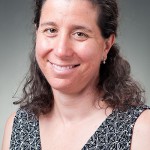Tag Research
100 years of discovery: Celebrating South Pole research
To mark the centennial of Roald Amundsen’s expedition to the South Pole, the IceCube Research Center invites you to join them for an evening of exploration and learning on Tuesday, December 13 from 6:30–8:30 at the Wisconsin Institutes for Discovery.
Snow in the Rockies, dry summers in the Southwest?
New simulations of summer rains in the arid American Southwest show that they are influenced by the previous winter's snowpack in the Rocky Mountains.
Pioneering molecular biologist, formerly at UW–Madison, passes away
Masayasu Nomura, a molecular biologist who studied the structure that forms proteins inside cells at University of Wisconsin–Madison between 1963 and 1984, passed away on Nov. 19 at age 84 in California.
Global winds could explain record rains, tornadoes
Two talks at a scientific conference this week will propose a common root for an enormous deluge in western Tennessee in May 2010, and a historic outbreak of tornadoes centered on Alabama in April 2011.
David Krakauer nurtures scientific collaboration
Education and research are splintering into new specialties at an unsustainable rate, according to David Krakauer.
Discovery building marks first anniversary with Gold LEED
When the Wisconsin Institutes for Discovery celebrates its first birthday this Friday, Dec. 2 at the University of Wisconsin–Madison, visitors can learn a new "first" about the building while taking a behind-the-scenes "green" tour or sharing locally sourced cake with Bucky.
Ancient environment found to drive marine biodiversity
Much of our knowledge about past life has come from the fossil record — but how accurately does that reflect the true history and drivers of biodiversity on Earth?
Psychopaths’ brains show difference in structure, function
Images of prisoners' brains show important differences between those who are diagnosed as psychopaths and those who aren't, according to a new study led by University of Wisconsin–Madison researchers.
New evidence links virus to brain cancer
Tilting the scales in an ongoing debate, University of Wisconsin–Madison researchers have found new evidence that human cytomegalovirus (HCMV) is associated with glioblastoma multiforme (GBM), the brain cancer that killed Sen. Edward Kennedy.
Hydrogen peroxide provides clues to immunity, wound healing, tumor biology
Hydrogen peroxide isn't just that bottled colorless liquid in the back of the medicine cabinet that's used occasionally for cleaning scraped knees and cut fingers. It's also a natural chemical in the body that rallies at wound sites, jump-starting immune cells into a series of events.
Implanted neurons, grown in the lab, take charge of brain circuitry
Among the many hurdles to be cleared before human embryonic stem cells can achieve their therapeutic potential is determining whether or not transplanted cells can functionally integrate into target organs or tissues.
Helping computers make faster decisions
Industrial and systems engineering professor Jeff Linderoth is working on a way to help computers make yes/no decisions faster by enhancing the standard algorithm computers use to solve a class of problems called integer programs.
Biochemist Har Gobind Khorana, whose UW work earned the Nobel Prize, dies
Biochemist Har Gobind Khorana, who received the Nobel Prize for research he conducted while at the University of Wisconsin–Madison, died Wednesday, Nov. 9 in Concord, Mass. at age 89.
Forums set to hear research compliance experiences
The Faculty Senate’s Research, Safety and Compliance Oversight Committee will hold a series of forums to hear from faculty and staff on their experiences with research oversight.
Satellite technology enables rapid, accurate mapping of forest harvest in upper Midwest
Using satellite images, Mutlu Ozdogan, an assistant professor of forest and wildlife ecology at the University of Wisconsin–Madison is automatically generating maps showing where trees have been harvested in the form of clear-cut areas over five-year intervals.
Major study returns to probe mid-life, recession-related harm
The deepest economic downturn since the Great Depression is a prime research opportunity for "Midlife in the United States," a long-running and expansive study of the interplay between social and psychological factors and physical health.
Center turns to innovative methods with first-year students
Inside UW–Madison talks with Center for the First-Year Experience Director Wren Singer ahead of the center's annual conference about how the university has shifted to a more comprehensive approach to serving the needs of first-year students.
Study: Monkey mothers key to reproductive success of sons
If you are a male human, nothing puts a damper on romantic success like having your mother in tow. If you are a male northern muriqui monkey, however, mom’s presence may be your best bet to find and successfully mate with just the right girl at the right time, according to a study reported by UW–Madison anthropologist Karen B. Strier.
UW study will explore anemia
To say a pregnant woman is eating for two leaves out a few guests at the table - trillions of them, according to Christopher Coe, a University of Wisconsin–Madison psychology professor who will soon begin studying anemia with funding from the Bill & Melinda Gates Foundation.







